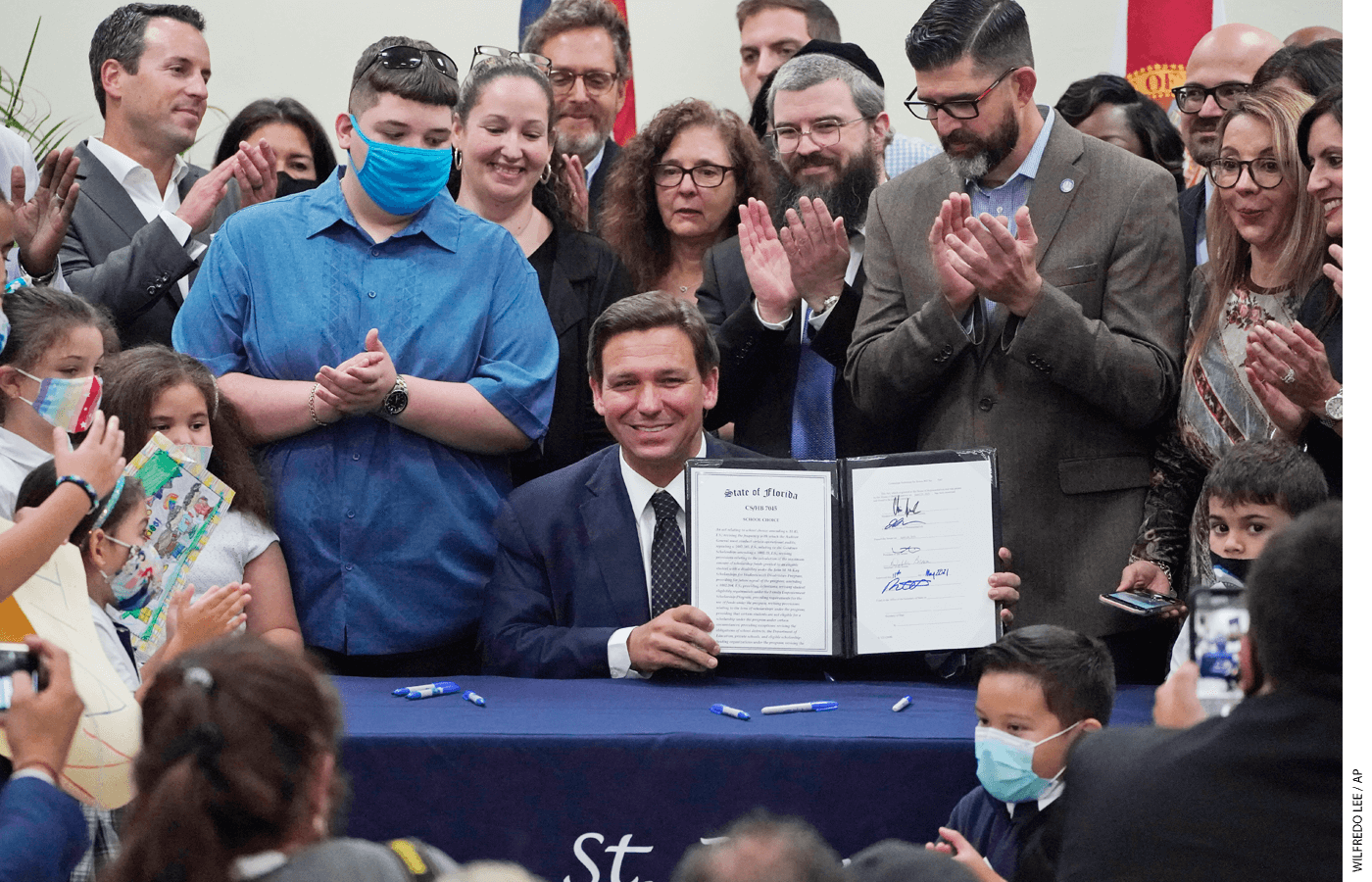
Remember the Red for Ed movement? Three years ago, teachers in West Virginia massed on the state capitol by the thousands, demanding salary increases and seeking to stop legislation that would have brought private-school choice to the state. For the most part, the teachers succeeded. They got their raise and prevented all but the creation of a few public charter schools. Their tactics soon spread to other states, with large teacher protests leading to salary hikes in Arizona, Indiana, Kentucky, and Oklahoma.
Teachers in West Virginia not only reveled in their success but also vowed to punish their enemies. In last year’s primaries, they helped unseat a pair of state senators who were prominent supporters of school choice. Overall, however, teachers suffered political losses in the state. Republicans won supermajorities in both legislative chambers, and they wasted little time before passing one of the most expansive school-choice laws in the country.
West Virginia now offers universal education savings accounts, or ESAs. These differ from traditional vouchers in that they can be used not only for private-school tuition but also for tutoring, therapies, technology, and all manner of education-related services. The state’s new Hope Scholarship program, which launches in the 2022–23 school year, provides students with up to $4,600 each in state funding for a wide range of approved services (including those from out-of-state providers). The program is open to all K–12 students, with funds available to families who withdraw students from public schools or who don’t enroll new school-aged children there in the first place. What’s more, there’s a trigger provision that allows children who are already enrolled in private schools to receive vouchers, if participation in the ESA program does not exceed 5 percent of public-school enrollment within two years.
Other states have experimented with ESAs but, as with other choice initiatives, these scholarship programs have generally been limited by geographical area or to particular populations of students or families (such as children with disabilities or those from a military background). In West Virginia, ESAs are not capped and will be widely available. “They had no private-school choice a year ago, and now they have the most ambitious program in the country,” says Patrick Wolf, an education-policy professor at the University of Arkansas. “They went from zero to 100 in one session.”
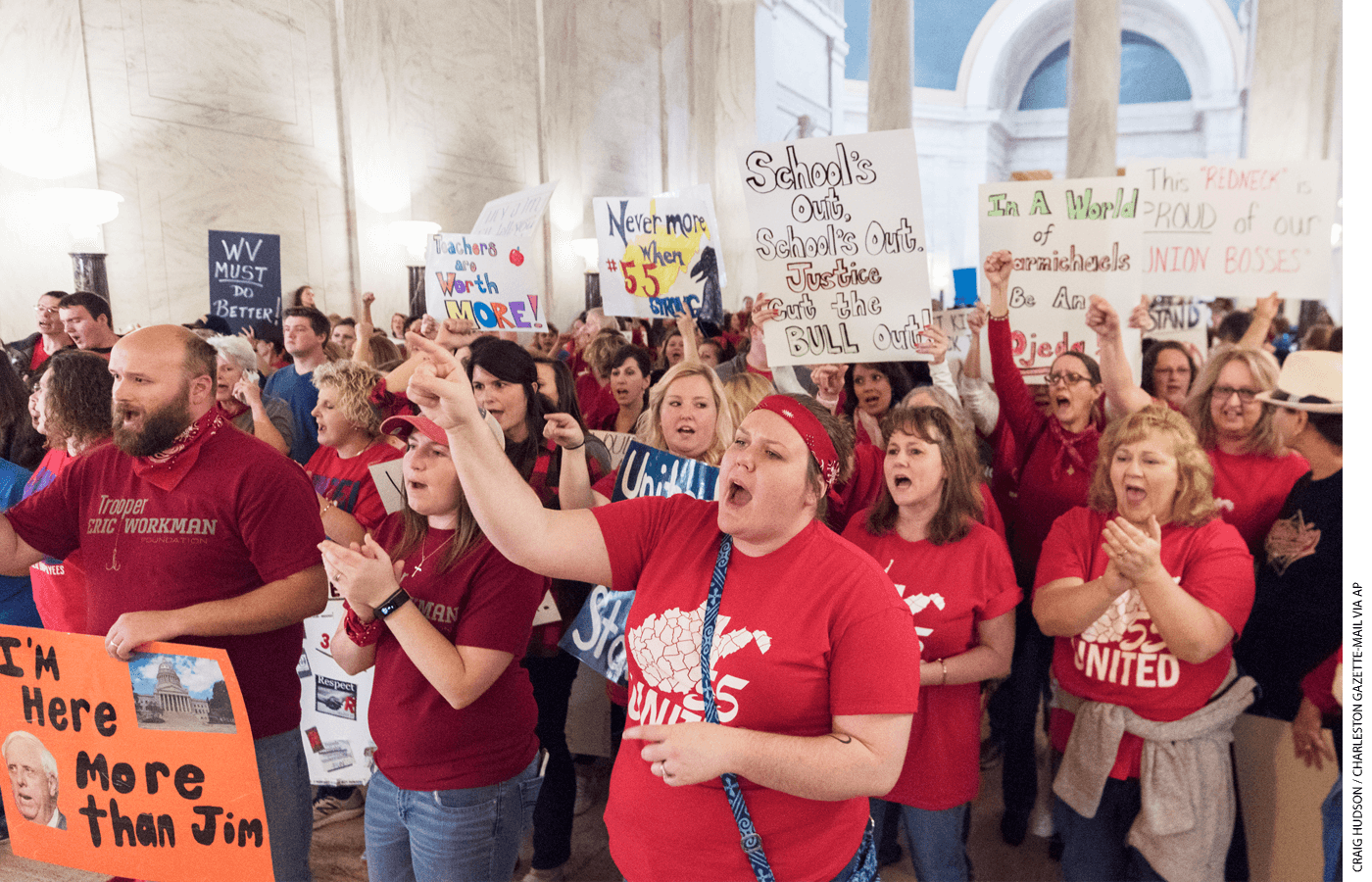
Victory Laps
West Virginia stands out in its dramatic move toward school choice, but it was far from the only place where proponents were able to take a victory lap this year. Other states that had long resisted choice options suddenly changed their positions. In states that have consistently experimented with alternatives to traditional public schools, such as Arizona and Florida, the size and scope of their programs continued to grow. “It has been a breakthrough year,” says Robert Enlow, president and CEO of the advocacy group EdChoice. “This is, without a doubt—based on all our tracking over the years—the biggest year for educational school choice.”
Florida remains a leader in providing options for families. About one in four U.S. children taking advantage of private-school-choice programs live in Florida. The state is continually expanding its offerings. A law enacted in May 2021 merged various programs while increasing private-school scholarships to 100 percent of per-pupil funding. The bill prioritizes low-income families making under 185 percent of the federal poverty level ($49,000 for a family of four) but expands eligibility to encompass those making up to 375 percent of the federal poverty level, or just under $100,000 for a family of four. The law also eliminates the old requirement that students enroll in public schools before applying for a scholarship, and it exempts military families from program limits and waiting lists.
In Florida, choice supporters are well organized, enjoying strong champions both in the legislature and in Governor Ron DeSantis, a Republican who has appointed choice-receptive justices to the state supreme court. Daniel Aqua, the executive director of Teach Florida, suggests that the state’s population growth has also helped promote its school-choice experiment, with both private and public schools seeing increasing enrollment. “With tremendous population growth comes decreased competition for children,” he says.
All told, seven states created new programs this year, while 11 more expanded existing options. The Wall Street Journal declared 2011 “the year of school choice.” In 2021, advocates have enjoyed even greater success.
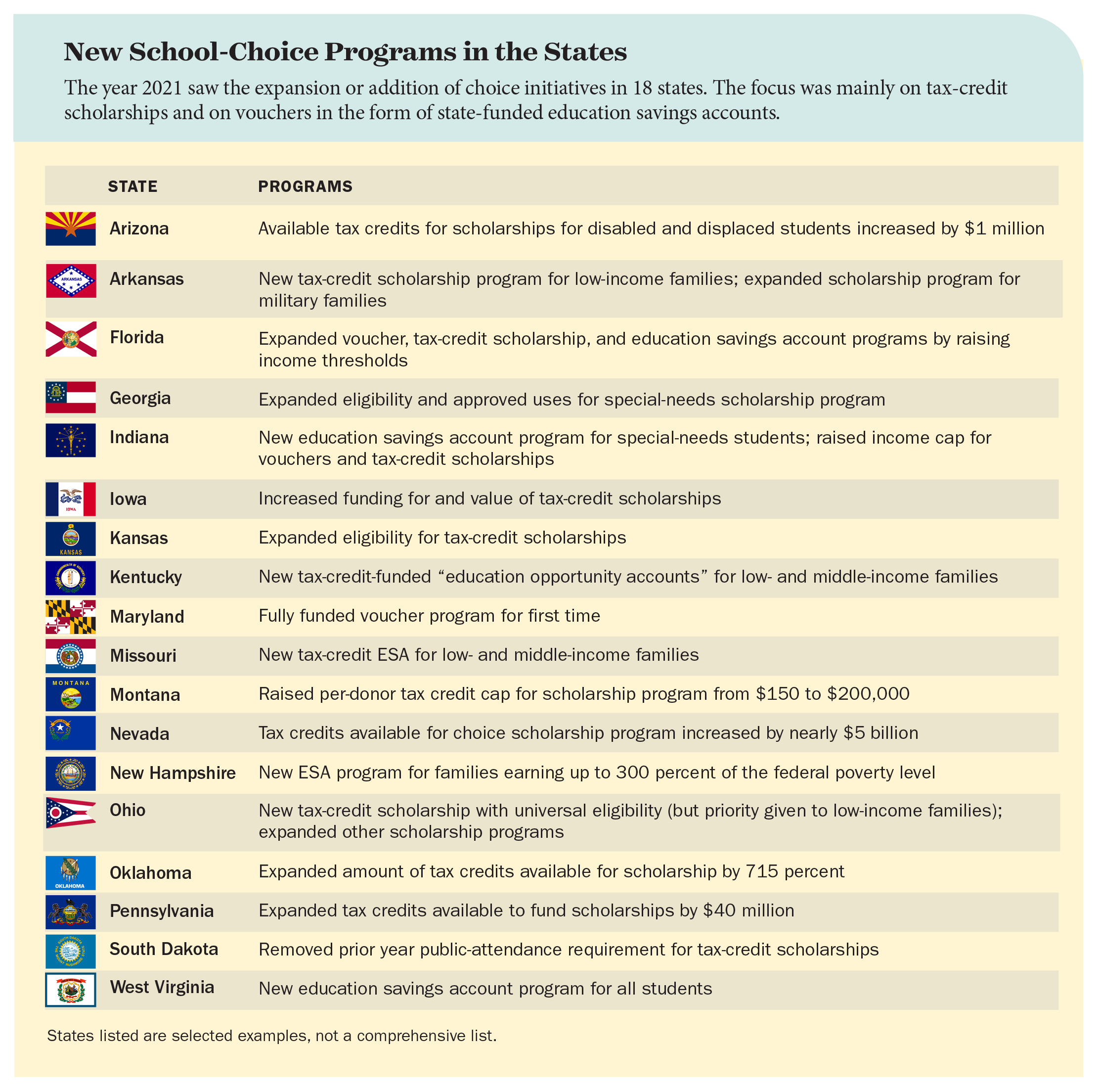
Several factors account for this achievement. The pandemic led to widespread school closures, which in turn caused real headaches for parents. It would be too much to say that all parents became choice parents, but clearly more of them—including affluent suburban parents who had generally taken pride in their local schools—suddenly found themselves scrambling for workable alternatives. By definition, this meant they were open to nontraditional instruction programs and methods, including private schools and learning pods. This dynamic helped expand the choice coalition beyond its core supporters among conservatives and libertarians paired, sometimes uneasily, with low-income minority parents from urban cores. Those groups, in turn, set aside their differences to work together in 2021. “Just as the country was splitting and becoming polarized, the school-choice movement was too,” Wolf says. “There didn’t seem to be as much cooperation between those two groups. But Covid changed that. There’s nothing like a crisis to bring people together and get them to focus on what unifies them.”
The pandemic not only shut classrooms but state capitols as well. With Covid-19 closing statehouses to the public for long stretches, teachers and parents opposed to choice programs were unable to gain easy access to legislators, let alone stage large demonstrations of the Red for Ed variety. This lack of access was a problem for advocates working in many policy areas, but it posed particular challenges for teachers and parents, who were already stretched thin owing to childcare difficulties and the demands of remote or hybrid instruction. There was less advocacy and legislative activity related to charter schools in 2021 simply because, as parents searched for options, they could already choose a charter school at no cost to themselves (in states that allow charters), while private-school tuition can be prohibitive for many families.
Finally, partisan politics played a role as well this year. The choice proposals that met success were launched almost exclusively in Republican-controlled states in the South and elsewhere. Not much happened in the Democratic blue states where schools were closed the longest. Although President Trump lost his reelection bid last year, he campaigned on choice and during his last month in office signed an executive order allowing states to use federal funds for vouchers for disadvantaged children. His education secretary, Betsy DeVos, was not able to move the needle much while in office, but she remains a formidable defender of choice. She and her family have helped to fund legislative candidates all over the country. In 2020, they devoted more than $10 million to political contributions in their home state of Michigan alone. Enlow, of EdChoice, says that the focus that DeVos and the Trump administration devoted to choice issues in the District of Columbia and nationally had a “unique, positive effect” on state action. Becky Pringle, president of the National Education Association, casts the former education secretary’s influence in a different light: “Now, after her voucher plans were rejected by Democrats and Republicans in Congress over the last four years, Betsy DeVos is funding efforts to push states with Republican-controlled legislatures to take scarce funding away from public schools and give it to private schools.”
Republicans gained or expanded their power at the state level last year, with Democrats failing to take control of a single legislative chamber. There have always been Republicans who oppose at least some kinds of school choice—Roger Hanshaw, the house speaker in West Virginia, voted against the ESA bill—but it became a lot harder for teachers unions and other choice opponents to kill a bill if they had to pick off 20 Republican votes rather than a handful. “This is a bipartisan issue, and it should be,” Enlow says, “but in places like West Virginia, the outcome of the election emboldened legislators.”
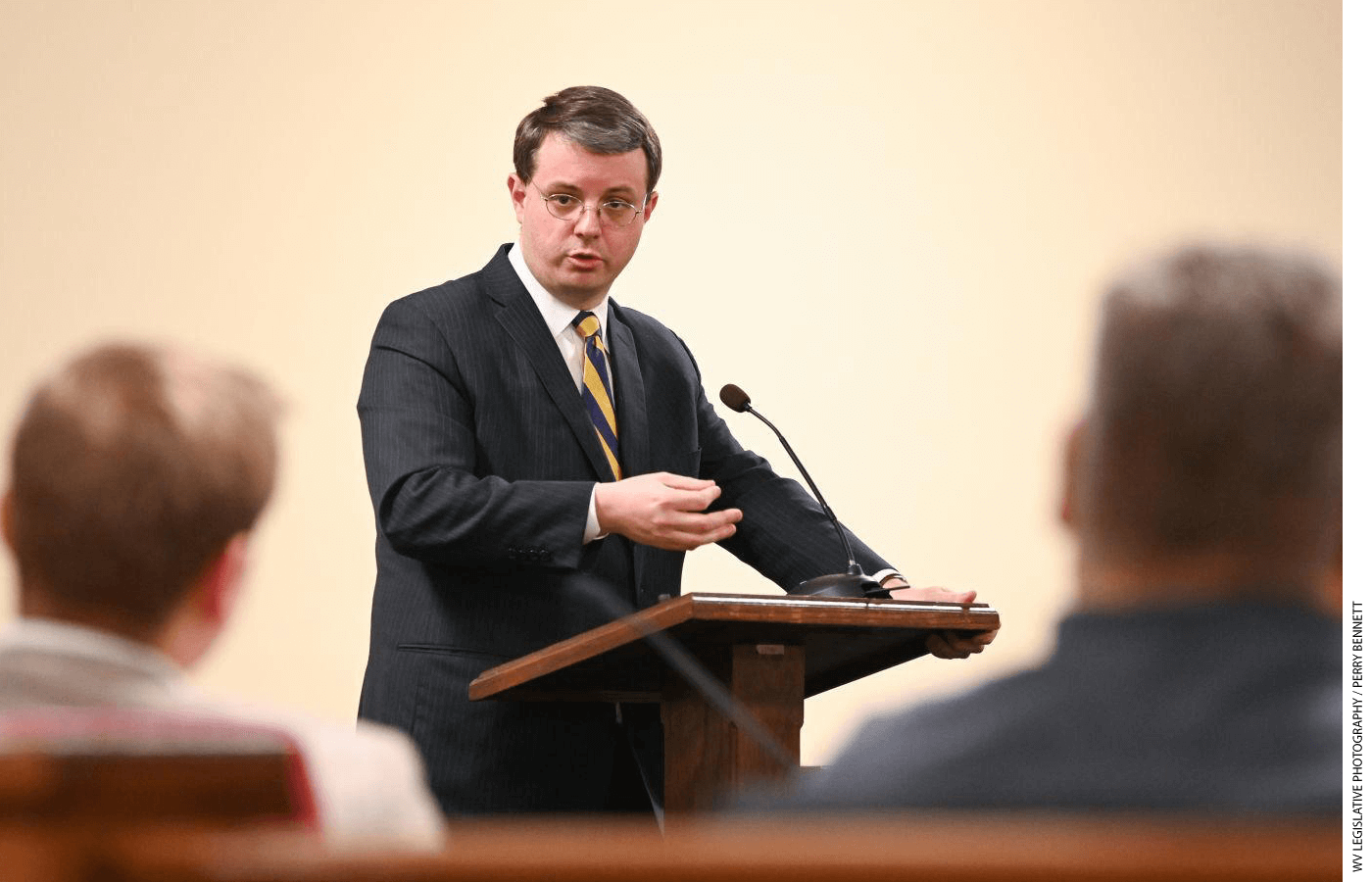
Building on Success
School-choice advocates held a much stronger hand this year than they’ve enjoyed in the recent past. The question now is whether they’ll be able to build on their success, or whether the pandemic created a singular set of political circumstances. History suggests that the momentum will continue. In many cases, only modest programs could muster enough support for initial passage, and that was so in some states last year. Once in place, however, programs have typically received additional funding, with eligibility requirements expanding over time. That’s been true in Florida, where bills to create or expand programs are passed nearly every year and where about 200,000 children are now enrolled in some sort of choice program.
Opponents of choice are worried about their recent losing streak continuing. Jack Schneider, an education historian at the University of Massachusetts Lowell, says that schools could reach an inflection point where such a significant number of tax dollars are diverted to homeschooling and private schools as to have a measurably damaging effect on traditional district schools, though it hasn’t yet happened in any state. “There’s a real danger of a negative feedback loop here,” he says. “You defund schools, the quality declines, and you’re able to make further arguments for, quote, choices for people, which further undermines the quality of schools.”
It’s been a full decade since Arizona launched its education savings account program. At the time, it looked like the hot new idea destined to spread rapidly to other states. That didn’t happen. In 2015, Nevada passed a law that promised nearly universal ESAs (96 percent of school-aged children in the state were eligible), but the program’s funding formula was blocked by the state supreme court, and the initiative was eventually killed when Democrats took control of the legislature.
This year, Indiana, Kentucky, Missouri, and New Hampshire all created ESA programs. Georgia expanded its special-needs scholarship program to make it act as a de facto ESA, allowing expenditures beyond tuition including tutoring, meals, transportation, speech and occupational therapy, and even uniforms. In 2020, North Carolina expanded its Opportunity Scholarship voucher program by boosting the family-income limit for eligibility and through other provisions.
“ESAs are sort of the sexy new model for private-school choice,” Wolf says.
By not limiting eligibility in any way, the West Virginia law lends credence to the time-honored complaint that such programs hand money to parents who aren’t sending their kids to public schools anyway. According to initial state estimates, the program will cost roughly $24 million to support students who leave public schools, but more than $100 million to subsidize those who have not been attending public schools.
Patricia Rucker, who chairs the West Virginia Senate’s education committee, says she “never understood why states would limit ESAs for certain types of kids and issues and geographical areas.” She says the public schools work well for most children—perhaps 95 percent of them—but there will always be students who are not well served by traditional schooling. As a parent of special-needs children herself, she has encountered moments when district schools weren’t able to be flexible enough to accommodate them properly. She often hears similar stories from other parents. “How can you ask a teacher with 30 kids to stop everything when one child is crying?” Rucker asks. “It’s really not fair to expect that.”
Whatever their benefits in terms of helping kids, ESAs turned out to have a secret ingredient that helped win political support for choice in some red states this year. Republicans dominate rural America politically, but winning rural voters over to the school-choice cause has been a struggle. Underpopulated areas typically offer families few options in terms of private schools, so there’s not exactly a groundswell of support for private-school choice among rural residents. Traditional public schools may be the only game in town. “In some of these small towns, not only is the school the major employer, but it’s the center of the community,” says Tim Benson, a policy analyst with the Heartland Institute, a conservative think tank in Illinois. “All the kids go there. Three or four generations have gone to that school. They don’t want anything to disturb it in any way.”
ESAs can introduce choice to rural areas, Rucker says, not only because parents can use the money to pay for tutoring and the like, but also because the funding that ESAs provide can potentially help build up the market for such services—a market that could include the public schools themselves acting as providers of discrete services. “There were legislators who had not supported choice in the past whose fears were greatly helped by pointing this out,” she says, “that you could use the money to pay for public-school services.”
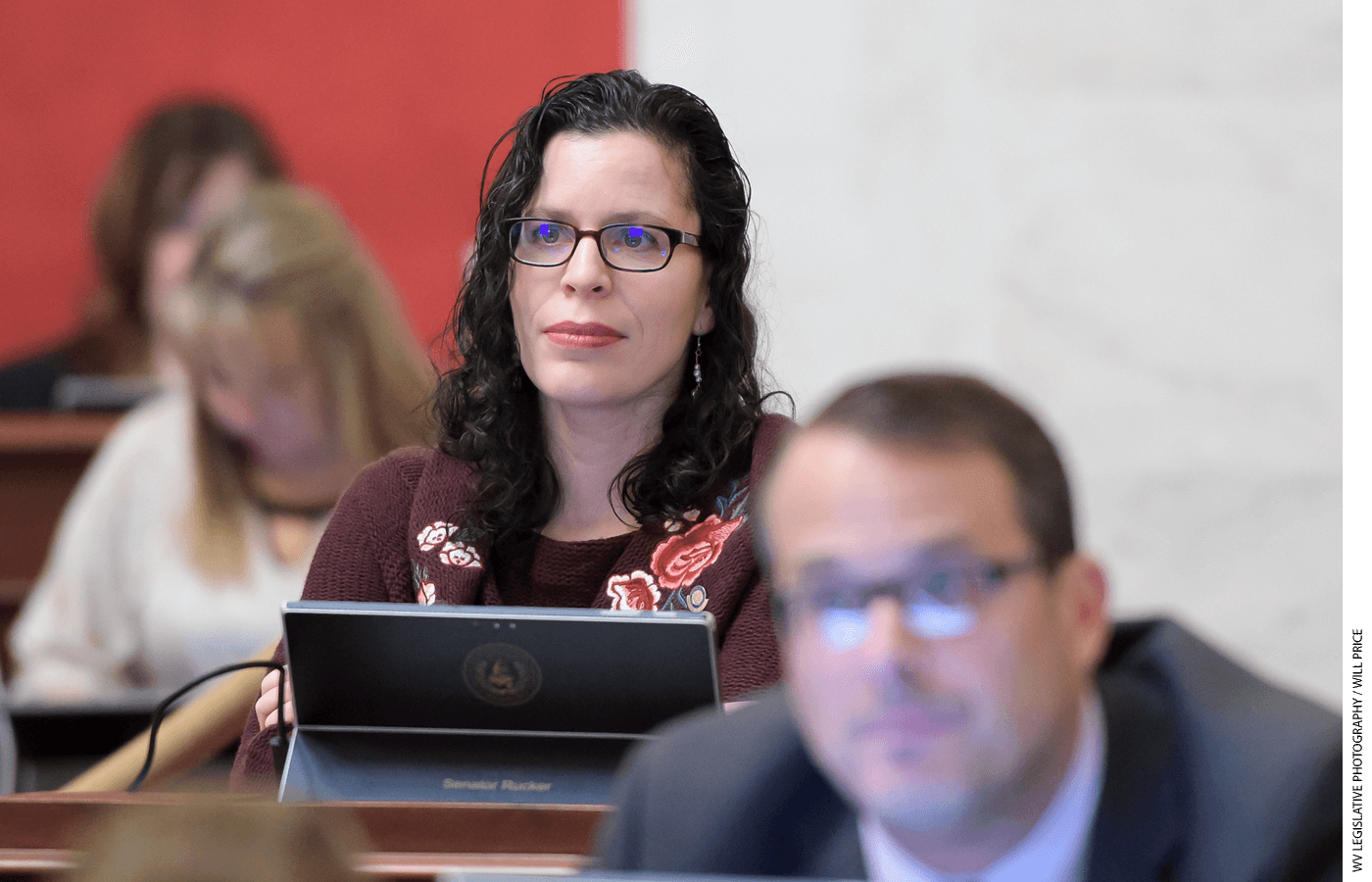
Tough Fight in Arkansas
Ken Bragg has been trying to initiate school choice in Arkansas throughout his three terms as a state legislator, taking up a baton that other lawmakers had carried for years prior to his arrival. In 2020, he couldn’t move a bill to create a tax-credit scholarship program (in which the state essentially underwrites scholarships by giving a tax break to donors) out of committee. He was more optimistic this year.
Bragg combined $4 million for the scholarship program with $6 million in grant money that public schools could apply for. He had hoped that the 60–40 split in favor of public schools would win over skeptics, but public-school administrators still worried about the per-pupil state funding they would lose with every child who accepted a scholarship to attend private school. Support in the house looked favorable, but enough legislators were “intimidated,” Bragg says, by telephone calls from school superintendents the night before the vote that they balked, and the bill failed—by eight votes.
“They all tend to stick together,” Bragg says, “even the rural schools that wouldn’t be affected by it.”
Bragg and his colleagues persisted, coming up with a much more modest proposal that offered $2 million for tax-credit scholarships. His initial bill included an escalation clause to increase funding by 25 percent once the $4 million or $6 million limits were reached. That provision was eliminated, as were a number of accountability measures and audit requirements.
Lack of accountability is one reason choice opponents say these programs are misguided. Any time there’s a lot of public money flowing out in multiple directions, they say, there’s potential for fraud. The West Virginia ESA program, for example, allows anyone who is not a family member to receive funds for tutoring. “The way you continue to get money is using the money,” says Carol Burris, executive director of the Network for Public Education, an advocacy group that supports public schools. “It really opens the door for misuse of funds and lack of education for children.”
The stripped-down bill in Arkansas provides enough funding for scholarships covering 250 children out of a statewide student population of 480,000. Over the past couple of decades, legislators in many states have adopted this kind of incremental approach. Unable to win support for more ambitious ideas, they take baby steps, launching initiatives that amount to pilot programs. Once programs are created, they can be expanded—and generally they are. Montana provides one striking example along these lines. Last year, Republicans won the governor’s office for the first time in 16 years, which eased the way for a major expansion of that state’s tax-credit scholarship program. Previously, credits per donor were capped at $150. Now, they can go as high as $200,000.
Lawmakers also expanded tax-credit scholarship programs this year in Florida, Indiana, Iowa, Kansas, Nevada, Oklahoma, and South Dakota. Because of state policymakers’ tendency to expand existing programs, even small initiatives such as Bragg’s encounter fervent opposition, with superintendents and unions viewing them as the camel’s nose under the tent. It’s also why choice advocates take what they can get from their state legislature, hoping to lay down even a tiny foundation they can build on later.
“If it’s a good program and it’s helping kids, wouldn’t you want to expand it?” Bragg asks.
Testimonials from parents whose children took advantage of a privately funded scholarship program in Arkansas provided powerful lobbying tools for Bragg, he says. School-choice advocates frequently say that word of mouth from satisfied parents is one reason choice programs have grown over the years. Schneider, the education historian, suggests this parental support also points to something about how choice proponents are now approaching their advocacy activity. For years, data comparing private and charter schools to traditional district schools have been muddy, at best, in terms of showing anything like superior performance among alternative institutions. Rather than making comparisons related to student achievement, Schneider says, choice advocates are now mostly trying to make a different kind of sale. “There’s some evidence to believe that some charter schools do some things pretty well,” he says, “but that’s not the rhetorical basis for a reform movement. Instead, we are hearing that we need to empower families with options and we need to stop letting big government and the teachers union dictate what’s best for kids.”
Pursuing the Vision
School choice has enjoyed some measure of bipartisan support, with many prominent Democrats singing the praises of charter schools. That was about as far as they were willing to go, however. For most Republicans, charters were only the starting point. They are pushing hard to realize the vision laid out by economist Milton Friedman more than a half century ago, in which public education dollars become fully portable, following students to any type of school they might attend. Advocates haven’t come anywhere close to achieving that vision, but it is still being promoted by DeVos as well as influential conservative groups at the state level, including the American Legislative Exchange Council and think tanks that are part of the State Policy Network.
In 2021, everything broke the right way for school-choice advocates. The pandemic roused dissatisfaction among parents while limiting the lobbying activity of teachers unions and their allies. This state of affairs put many Democrats in an uncomfortable position, trapped between frustrated constituents and unions who insisted in many jurisdictions on keeping schools closed, even after the science suggested they were not high-risk locations for contracting Covid-19. Last summer, United Teachers Los Angeles put out a statement saying that as part of a “safe and equitable start of school,” the union wanted passage of Medicare for All, new taxes on wealth and millionaires, housing for homeless and low-income populations, defunding of police, and a moratorium on charter schools. This may be an extreme example of a teachers union stretching its demands past the schoolyard, but conservatives are delighted to suggest that unions have overplayed their hand. “The pandemic and closures gave legislators the backbone necessary to go ahead and cast a vote for choice programs, where before they’d be on the fence,” Benson says.
Will that momentum carry over into a post-pandemic world? Conditions will be different. With schools open everywhere, many parents won’t feel the same urgency to find alternatives. But as with so many other issues, school-choice advocates say that Covid-19 served to reveal systemic weaknesses that have been present all along. It may have been the straw that broke the back of opposition, at least within the GOP. The few red states that had long been holdouts when it came to creating choice programs, such as Arkansas and Kentucky, have at last hopped on the bandwagon.
In West Virginia’s case, they’re now leading the band. “I really do think there is a sense of inevitability about the expansion of school choice,” says Garrett Ballengee, executive director of the Cardinal Institute, a conservative West Virginia think tank that helped promote ESAs. “I don’t think we’ll see a groundswell for limiting these programs.”
Alan Greenblatt is a reporter who covers politics and government. He is coauthor of a textbook on state government, Governing States and Localities.
This article appeared in the Fall 2021 issue of Education Next. Suggested citation format:
Greenblatt, A. (2021). School Choice Advances in the States Advocates describe “breakthrough year.” Education Next, 21(4), 18-25.


